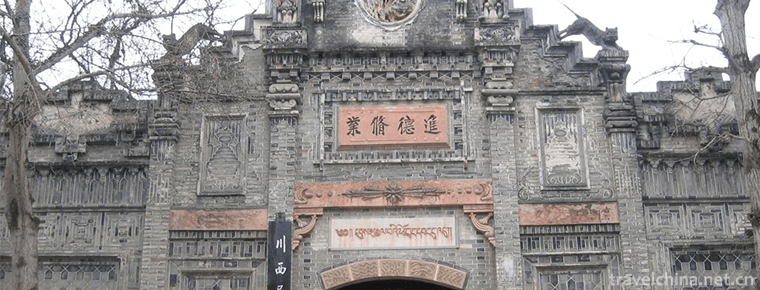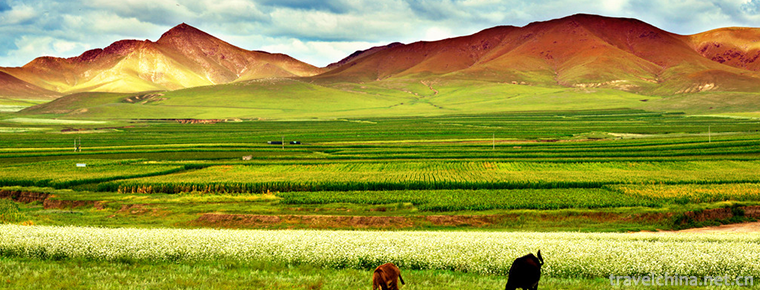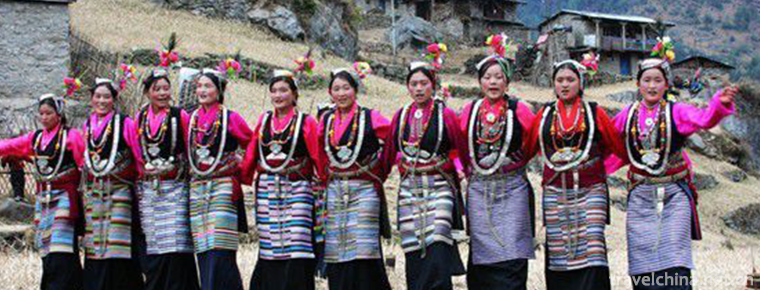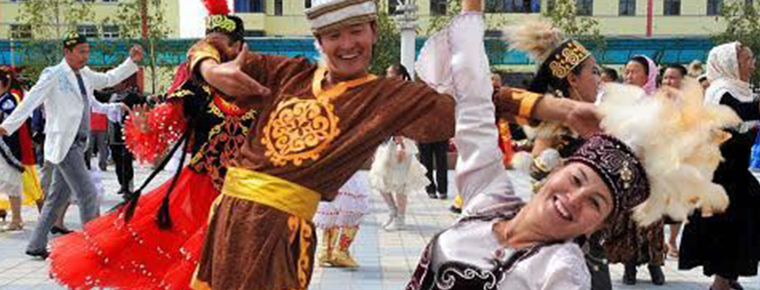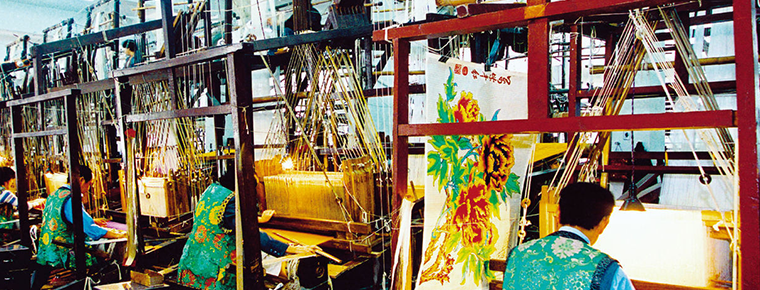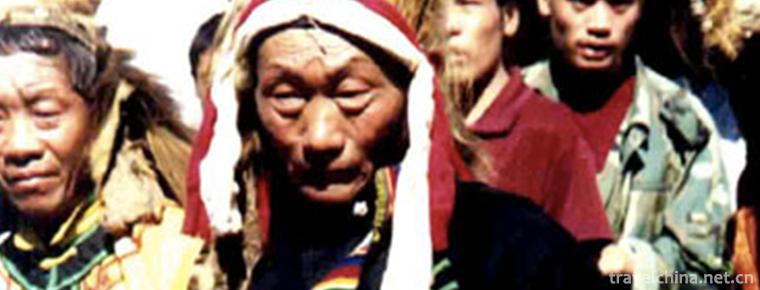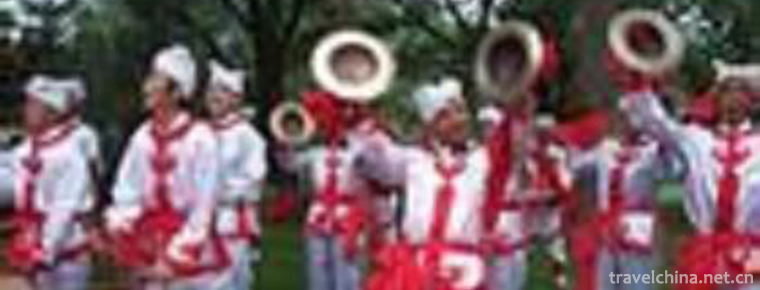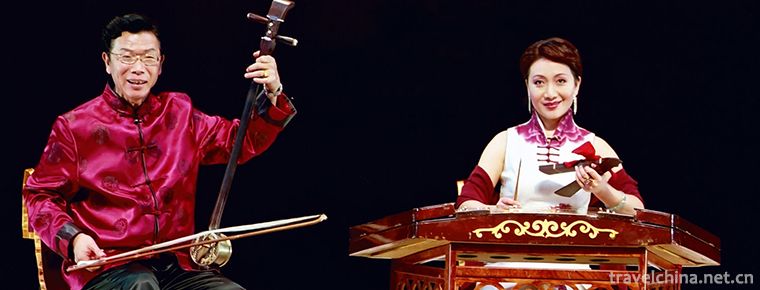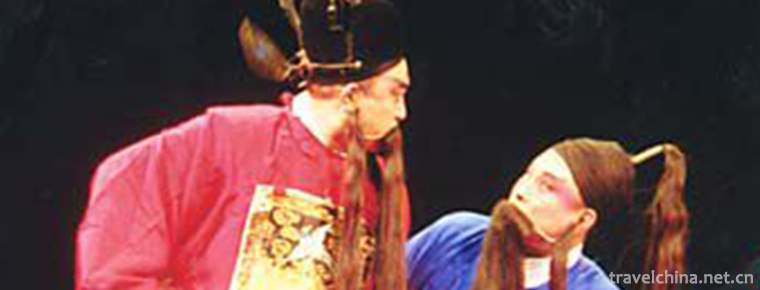Wan fo Lake Scenic Area
Wanfo Lake is located in Shucheng County, central Anhui Province. It is a national AAAAA tourist area.
He has won the honorable title of "400 best afforestation in national departments" and the "Ninth Five-Year" Tourism Reception Contribution Award of Anhui Province.
Its annual visitor reception has ranked among the forefront of scenic spots in Anhui Province.
Wanfo Lake has a long history and is an important birthplace of Chinese dragon culture and Zhou Yu culture. The development of Wanfo Lake tourism started in 1995. In accordance with the strategy of "government-led, export-oriented, brand-building, rich people and strong counties", adhered to the principle of "protection-oriented, scientific planning, rational development and sustainable utilization", and with the attention of leaders at all levels, after more than 10 years of development and construction, it was rated as national 4A level in 2006. On October 19, 2016, the tourist attraction was approved as a national 5A-level tourist attraction, and has won the National Water Conservancy Scenic spot, the main park of Dabie Mountain National Geopark, the best self-driving tourist destination in China, the National Youth outdoor sports camp, provincial scenic spot, Provincial Tourism Resort and the top ten tourist attractions in Anhui Province. Holiday base, A-class scenic spot favored by Anhui youth, and "Wanfohu" brand organic fish production base in Anhui province.
Wanfo Lake Town has a long history and rich culture. This is the birthplace of Zhou Yu, the famous general of the three kingdoms, and the origin of dragon culture. In the Han Dynasty, Lieutenant Meifu of Nanchang, who lived in seclusion in Dameishan and built the Meixian Temple, was nostalgic for the beautiful mountains and rivers here. Here are the Wanfo Zen Temple built in the Tang Dynasty. There are unearthed Neolithic fossils. There are cultural landscapes such as Wanfo Guanyin worship, Jiangziya fishing, Zhou Yu altar, Wulao Guantaiji and so on. The legend of the dragon and the story of the Dragon describe the land of Longshu. Wanfo Lake is known as a green jadeite inlaid on the edge of the Dabie Mountains in China and a bright pearl rising in the Yangtze and Huaihe Mountains with its abundant resources, superior geographical environment, unique attraction and amazing development speed.
Wanfo Lake, formerly known as Longhekou Reservoir, was built in 1958. It is an important part of Pishihang Water Conservancy Project, one of the five reservoirs in West Anhui. Because of the huge Guanyin rock facing the lake and the mysterious "Buddha worship Guanyin" scenery formed with many islands in the lake, and because the source of water comes from the scenic Wanfo Mountain, famous mountains and sacred waters, which are closely related, it is named Wanfo Lake. The area of the scenic spot is 135 square kilometers, the core area is 15 square kilometers, the lake surface is 50 square kilometers, the lake shoreline is 205 kilometers, the reservoir capacity is 903 million cubic meters, and the lake water belongs to the national surface class II water. It takes the beautiful island lake scenery as the carrier, the peculiar geological history as the basis, the profound cultural accumulation as the foundation, and forms the Island Lake cultural tourism area which integrates Lake landscape, volcanic landscape and cultural landscape.
Wanfo Lake is surrounded by mountains and ripples of blue waves. Sixty-six small islands in the lake, such as green turtles floating back, like fish coming out of the water, Peach Blossom Island, Swallow Island, Golden Coast, Custom Island, Hui Hui Mountain Forest and other scenic spots have their own characteristics, which make people linger and forget to return; Buddhist culture is highlighted by Buddhist rites and meditation at Wanfo Temple, Wanfo Pagoda, Wanyuan Temple; and the 1000-meter artificial earth-rock dam is pushed by shoulder. It is built in a way that is known by UNESCO as the world's largest artificial earth dam; volcanic eruption relics, which reproduces the original ecological features of "Jurassic Park" and the magnificent scenery of volcanic eruption; Guanyin Cave, Diaoyutai, North Wind conch tells beautiful and moving legends; Meishan Xiaoyan, Wanfoshilin, etc. Five Lao Guan Taiji makes people admire the magical charm of nature. Rich natural landscape and humanistic landscape are like a painting of ink and wash. On this land of Zhong Ling Yuxiu, we nurtured three great sages, Zhou Yu, Wenweng, the ancestor of public school, Li Gonglin, Sun Liren, the first painter of Song Dynasty, and so on. We also left the traces and Chinese inscriptions of Su Shi, Wang Anshi, Huang Tingjian and other literati and Mohists.
"Huguang Mountain, Baili Gallery, Jianghuai Pearl, Holiday Resort". With its broad mind, Wanfo Lake integrates "mountains, waters, springs, rocks, islands, cliffs, walls, ponds, forests and fish" to form a beautiful and colorful fairyland on earth.
Wanfo Lake is a national AAAAA level tourist area, a National Water Conservancy Scenic area, a national geological park, a provincial scenic spot and a provincial tourism resort. Anhui tourism is one of the top ten holiday bases. It is known as "Beidaihe in Anhui and the back garden of Hefei". It can be called "Lake, Mountain, Baili Gallery; Drunken Landscape, Leisure Paradise".
Main Gate of Wanfo Lake Scenic Area
The main gate of Wanfo Lake Scenic Area was built according to the design concept of "running clouds and running water". The gate is 98 meters wide and 22.7 meters high, with a total investment of 5.2 million yuan. It is a steel structure gate and is one of the landmark buildings of Wanfo Lake.
Humanistic landscape in front of dam
The humanistic landscape in front of the dam covers an area of 810 mu, which is composed of celebrity road, lotus plaza, figure sculptures and so on. It shows the magnificence of the ancient and modern sages and the wisdom of the people in Shucheng.
The park has beautiful scenery and rich cultural connotations. Pavilions, lotus ponds, docks and waterwheels highlight the cultural characteristics of Wanfo Lake. Ship shopping kiosks, poles, unicycle seats and figure sculptures reproduce the working scenes during the construction of reservoirs, expressing the lofty respect for dam builders.
Measuring weir
Because the dam is a sand shell dam with clay core wall and built by horse in soil method, there has been a part of seepage since its completion. The seepage situation of the dam can be detected in time through the water measuring weir, which is the "thermometer" of the dam.
This hidden danger was solved after the dam was reinforced by grouting in 2002. This water conservancy facility is now retained as an educational base for tourists to enjoy.
Group of Heroes
According to the memories of the builders and pictures of historical materials, the works portray the heroic feelings of Shucheng people who built the artificial dam of Longhekou Reservoir in the battle of heaven and earth.
The sculpture works are divided into a series of "heroic" Tie Girl Team, "fighting for every minute" Youth Commando Team, "energetic" battlefield propaganda team, "advancing bravely" unicycle transport team, technical staff writers of "tackling key technical problems", "building a city with all aspirations" and "overcoming difficulties" by migrant workers. Scene of working life. Seven groups of 45 sculptures are organically combined to vividly reproduce the magnificent labor scene at that time.
Through artistic expression, the works extol the noble quality of reservoir builders, convey the realistic spirit, enterprising spirit, unity spirit and dedication spirit of Shucheng people, and express the lofty respect for dam builders, which is a grand song of grandeur.
Longhua temple ruins
It was built in the Tang Dynasty and rebuilt in the Ming Dynasty. Longhua Temple has Daxiong Hall, Maitreya Hall, Tibetan Sutra Building, etc. Among them, Daxiong Hall is 18 meters high and 400 square meters in construction area. It is dedicated to the Han Baiyu Buddha, the world-watching Bodhisattva and the Thousand-Handed Guanyin. Temple carved beams and painted buildings, simple and magnificent, morning bells and evening drums, exuberant incense. After being destroyed by the war, it was rebuilt in 1997 and moved to the Wanfo Zen Temple. In 2013, the Wanfo Lake Scenic Area was restored.
Gong Jin Jian Jian Shi
Legend has it that Zhou Yu practiced martial arts with this stone for a long time. The marks on the stone were like knives cutting the earth.
Sightseeing tower
The building style is imitative Ming style, with an area of 3800 square meters and a height of 56 meters. It has seven floors. Each floor is painted with colors describing the Avalokitesvara Monastery. It is one of the four landmarks of Wanfo Lake.
In memory of the heroes who sacrificed for the construction of Longhekou Reservoir Dam, this pagoda was built for the protection of Longshu, the smooth weather and the people's safety in Guotai. From the top of the pagoda, you can have a bird's eye view of Longshu, the main peak of Wanfo Mountain can be seen to the south, and the leading pagoda can be seen to the north.
Pulau Layang-Layang
Swallow Island is named for its shape like a flying swallow attached to the lake. Yanzi Island highlights Li Gonglin culture and bird culture. According to the scenes depicted in Li Gonglin's "Dragon's Dormancy Villa Picture", there are Mo Zen Hall, Li Gonglin Hall and Baibirdyard, which are good places for leisure and health. In Mozen Hall, you can see painters splashing ink; in Li Gonglin Museum of Art, you can enjoy the paintings of Li Gonglin, the first person in Song Painting; in Baibirdyard, you can watch birds, Peacocks Flying Southeast and cormorants fishing performances.
Zhou Yu Dao
Zhou Yu Island, which is composed of Yujin Garden, Wisdom Garden, Bosom friend Garden, Sandun and many other islands, is a tourist attraction, but also a happy place for life growth. Zhou Yuzigongjin, a famous strategist and military commander in ancient China, was a famous general of Dongwu during the Three Kingdoms Period. He is a native of Ganchahe Town, Shucheng County. According to legend, his ancestral grave was buried on the Castanopsis Hill on the North Bank of Wanfo Lake embankment, which is the pride of Shucheng people. Shucheng has abundant relics and folklore about Zhou Yu. Zhou Yu Island takes Zhou Yu's growth story as its main line and Dongwu Shuizhai as its characteristic. It is interlinked and splendid. Yujin Garden has a magical chestnut tree to tell you the story of "Egret Yuzhou Yu"; in the Wisdom Garden, there is a legend of "Five Old Gifts of Treasures" to experience the Sinological fun of Zhou Yu's reading building; in the Zhiyin Garden, there are aesthetic "Qin Se Meets Bosom Friends", and also beautiful classic opera "Zhou Yu Return to Home" to tell you a love story; in Sandun, you can practice it. Experience the "leap to the limit" and feel the fighting pride of the rope-boat and target shooting.
Amorous Island
In front of us, we can see the Island of Customs, which is characterized by demonstrating the folk customs of the Dabie Mountains. It is centered on folk culture, farming culture and filial piety culture. It can enjoy the cultural landscape of the Garden of Agricultural Interest, the Dabie Mountain Folklore Hall, the Garden of Agricultural Culture, the Mother's Garden of Filial Piety, and embroidery ball throwing, lion dancing, yangger, Luju opera, Huangmei opera, etc. Folk customs and artistic performances.
Wan Fu Island
In front of us, we can see Wanfo Island, which takes the theme of "Clean mouth, Clean body and Clean heart" to show the Buddhist culture to tourists, so that tourists can practise Buddhism and Zen in an all-round way.
Daxiong Palace, Guanyin Pavilion, Wanfo Pagoda and Buddha Heart Pavilion are built in the island for visitors to worship Buddha. There are also facilities such as Free Life Pool, Silence Platform, Xiangfo Tea Field and Jiuqu Bridge for visitors to visit.
Dragon King Island
In front of us, we can see the Dragon King Island, which is named after the Neolithic "Dragon King Tree" site because of its Panlong shape. Longwang Island is dominated by dragon culture and Neolithic relics culture, highlighting the local context. There are Oolong Temple, Dragon Culture Square, Longzhiwang, Longwangshu Cultural Park and other cultural landscapes on the island.
Bighead, Wan fo Lake
Shucheng Wanfo Lake is an ideal natural fishery farm because of its open water surface, fresh water quality, surface water level II, people can drink directly, and rich natural bait in the lake. The fish is rich in special substances such as lowering blood pressure, softening blood vessels, anti-aging DHA, EPA and incubating phospholipids. It is a rare dietary health product. Wanfo Lake has signed perennial supply contracts with many large hotels in the provincial capital. It is exported to northeast and North China, and is also well-known in Nanjing, Hangzhou and Shanghai.
Fish head in Wanfo Lake casserole
"Wanfo Lake Sandpot Fish Head" is made of real Wanfo Lake bighead as raw material, coupled with pure Lake water, with unique ingredients, stewed in gentle fire. It tastes delicious, tastes unique, fresh but not fishy, fat but not greasy, rich tender juice, soup opalescent, high protein, low fat, and rich in potassium, sodium, iron, phosphorus, selenium and other trace elements necessary for the human body, the content of vitamin A is the highest, up to 34 mg/100 g, in line with the modern pursuit of healthy food, is truly green. Color food.
Camellia oil
Wanfohu Camellia Oil, i.e. Golden Fruit Oil and Fine Oil, is prepared from Dabie Mountain woody tea by scientific processing and careful preparation. Local people call it "an indestructible natural oil depot" and "an indestructible iron crop". The product not only has high nutritional value of edible oil, but also has the function of physiotherapy and health care. Tea oil is a kind of high nutrition edible oil, which is mainly suitable for food, medical care and daily chemical industry. It has good health functions such as moistening lung, clearing liver, lowering blood lipid, blood pressure and cholesterol. It is especially significant in preventing hypertension, hyperlipidemia and arteriosclerosis.
The rubble hills, Wenjiadun and Longwangshu of Wanfo Lake provide us with historical evidence of Mr. Zu's hard work. The ancient sites such as Longhekou, Meifu Cave, Diaoyutai and Zhou Yu's ancestral grave tell us beautiful and moving legends. Under the top of the old Buddha, there is a 2-meter-high and 1-meter-wide "authigenic stone tablet", which is a cultural relic protected at the county level in Shucheng. On the tablet is inscribed in the Qing Dynasty Guangxu "Wanfo Mingshan" four big characters, after a hundred years of rain, snow, wind and frost but not annihilated, 2017 is still a vigorous, elegant face to show visitors. This is also the hometown of Zhou Yu, the famous general of the three kingdoms, and the origin of dragon culture. In the Han Dynasty, Lieutenant Meifu of Nanchang, who lived in seclusion in Dameishan and built the Meixian Temple, was nostalgic for the beautiful mountains and rivers here. Here are the Wanfo Zen Temple built in the Tang Dynasty, the unearthed Neolithic fossils, the cultural landscapes of Wanfo Guanyin worship, Jiangziya fishing, Zhou Yu altar, Wulaoguan Taiji and so on, which provide precious information for historical research, so that tourists can enjoy the historical flavor.
The local government and relevant departments have formulated relevant normative measures to protect the precious historical relics and cultural landscapes of Wanfo Lake. There are well-preserved sites and relics of the study, life and work of Zhou Yu, the three famous generals of the Three Kingdoms, Wenweng Weng, Li Gonglin, the first painter of Song Dynasty, and Sun Liren, the famous anti-Japanese general. The Shucheng county-level preserved cultural relic "authigenic stone tablet" on the Danfeng Peak at the top of the old Buddha is also well preserved, with the inscription "Wanfo Mingshan" inscribed during the Guangxu period of the Qing Dynasty still on it. The Wanfo Lake Scenic Area also maintains the primitive natural ecology, and keeps a treasure land full of history and ecological civilization for tourists and scholars.
Wanfo Lake Scenic Area Development Training Base is located in Sanjiang Wharf of Wanfo Lake, a tourist resort on the water side. It is the independent development training base of Hefei's Chinese development training and education. Wanfo Lake Scenic Area is the earliest training base engaged in expansion training and expansion base. It is also the development training company and travel agency in Hefei and its surrounding areas, and individual visitors come to Wanfo Lake. The best choice of scenic spots.
Wanfo Lake Scenic Area Development Training Base can carry out site, high altitude, water and military development projects, build a professional bonfire party venue, to meet the different training needs of enterprises, institutions and various teams. The expansion projects include:
1. High-altitude projects: grab bars, ladders, broken bridges, high-altitude cables;
2. Site Project: Trust Backfall, Crocodile Pool, Graduation Wall, Isolated Island Survival, Life and Death Grid; Bigfoot Board, Rolling Wheels, Challenge 150, Ice Sea Sunken Ship, Ray Array, Base Oriented Treasure Search, Blind Square, Eyebrow Rod, Sound and Drum, Human Domino... More than 100 routine expansion projects;
3. Water projects: rafting and swimming, beach landing, water rafting, etc.
4. Military Projects: Real-life CS Radium Warfare, Military Five, Military Off-road, etc.
Since the establishment of the expansion base, nearly 100 training institutions in the province and the whole country have cooperated with Shui Fang Resort for a long time, providing various kinds of development training for nearly 10,000 government organs, enterprises and institutions, and successfully held the Anhui Development Summit Forum in March 2010, which won praise from the training circles.
Wanfo Lake Scenic Spot Gate is about 2 kilometers away from Wanfo Lake. When traveling by means of transportation, we must inquire about whether it is to reach the Scenic Spot Gate or the Visitor Hall.
2. Tourists should wear comfortable sneakers or running shoes, as well as rain gear to enjoy the beautiful scenery.
The scenery of Lake 30000 is beautiful. Visitors can wear bright colored clothes to take photos, which is more photographic.











-
Dayi Liushi Manorial Museum
Dayi Liu Manor Museum, located at No. 15 Jingui Street, Anren Town, Dayi County, Chengdu City, Sichuan Province, is one of the most important historical sites and representative buildings in modern Ch.
Views: 203 Time 2018-12-26 -
Bayinbrook Grassland Scenic Area
Bayinbrook grassland: formerly known as Yuledus grassland, Zhuledus grassland, Yuludus grassland, because it is mainly located in Xinjiang Bayinguoling Mongolian Autonomous Prefecture .
Views: 87 Time 2019-01-02 -
Chentang Sherpa Singing and Dancing
Chen Tang Sherpa Song and Dance is a traditional folk song and dance in the Sherpa community of Tibet. Accompanied by "Zhanlie" (Six Strings) and "Biwang" (Huqin)..
Views: 119 Time 2019-04-16 -
Kazakh Karakol Leha
On May 23, 2011, Kazakh Karakol Kazakh was listed in the third batch of national intangible cultural heritage list with the approval of the State Council..
Views: 307 Time 2019-05-02 -
Lu Opera
Luju opera, formerly known as "pour seven operas", is commonly known as "small opera", "prayer and sacrifice opera", "small pour opera", "small barbaric op.
Views: 136 Time 2019-05-15 -
Lu Brocade Weaving Techniques
Lujin brocade weaving technology, traditional handmade brocade weaving technology in Juancheng County, Shandong Province, is one of the national intangible cultural heritage..
Views: 194 Time 2019-05-15 -
Qiangge war
The Battle of the Qiang is the most famous one among the folk epics of the Qiang people. It describes the history of the ancestors of the Qiang people who had experienced hardships and hardships.
Views: 164 Time 2019-06-10 -
Daoism in Northern Shaanxi
As one of the traditional folk songs in northern Shaanxi, Daoqing in northern Shaanxi was originally called "Qingjian Daoqing". Later, because "Longdong Daoqing" and "Shenchi .
Views: 162 Time 2019-06-13 -
Xibo embroidery
Xibo embroidery has a long history and rich connotation. Xibo women are skillful and skillful in capturing the beautiful scenery in life. During more than 200 years of living in the western part of th.
Views: 378 Time 2019-07-01 -
Yicheng Qinshu
Yicheng Qinshu is called "Qinshu" because its main accompaniment instrument is Yangqin. Yicheng Qinshu is an ancient traditional folk art. Legend has it that it originated in the late Yuan D.
Views: 281 Time 2019-07-13 -
Yingge Liushu
Yingge Liushu, also known as Yingge Liuzi, is a traditional art form of rap and singing spread in southwestern Shandong, southern Shandong, Eastern Henan and Northern Jiangsu. Legend has it that the L.
Views: 293 Time 2019-07-14 -
Public education in Chengdu Giant Panda Base
From 2003 to 2016, Chengdu base received more than 100000 primary and secondary school students at home and abroad, and trained more than 800 volunteers; went to colleges and universities, communities, primary and secondary schools, kindergartens and nature .
Views: 353 Time 2020-12-13
